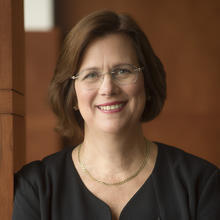Dear Colleagues,
As clinicians, we are often faced with patients whose vision we cannot improve any further by medical or surgical treatment. These patients have low vision, a condition that is predicted to affect more than 5 million people in the United States by the year 2030. Chronic vision impairment is a leading cause of a compromised quality of life with high rates of depression reported in patients of all ages, races, and genders. Vision rehabilitation can help your patients maximize the use of their remaining vision and improve the overall quality of their lives.
Just as stroke rehabilitation or cardiac rehabilitation is part of the continuum of general medical care, vision rehabilitation is part of the continuum of ophthalmic care. You play an important role in this continuum, which is to connect patients with vision rehabilitation services and self-help resources while they are under your care.
In the 1960s, Mass. Eye and Ear became home to the nation's first comprehensive, hospital-based Vision Rehabilitation Service. The Service was developed under the leadership of Dr. Joel Kraut, Dagmar Friedman, Robert Storer, and a dedicated group of trustees. Since then, vision rehabilitation has emerged as a distinct ophthalmic subspecialty in the United States and Canada.
We follow the Comprehensive Vision Rehabilitation model of care, which was adopted by the American Academy of Ophthalmology. This multidisciplinary model addresses the whole person, including safety, activities of daily living, reading, continuing to participate in the community, and psycho-social well-being. The Massachusetts Commission also uses this model to ensure that all patients who are legally blind (20/200 or worse) are offered support services.
It is critical to identify at-risk patients and refer them for vision rehabilitation in order to preserve their independence and quality of life. We hope you and your patients benefit from the digital resources included in this issue of Eye Insights. Smartphone users can also download a free magnifying and image stabilizing app, developed at Mass. Eye and Ear, called SuperVision+ Magnifier (iOS or Android operating systems).
 Joan W. Miller, MD
Joan W. Miller, MD
David Glendenning Cogan Professor of Ophthalmology
Chair, Harvard Medical School Department of Ophthalmology
Chief of Ophthalmology, Massachusetts Eye and Ear and Massachusetts General Hospital
